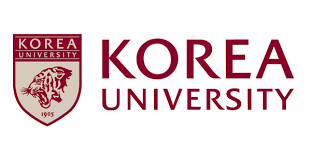Korea University: Analyzing Stem Cells Using AI Deep Learning
The research group led by Professor Hong Sung-hoi of the School of Biosystems and Biomedical Sciences at the College of Health Sciences developed a Convolutional Neural Network (CNN) algorithm based on AI deep learning and thereby produced an AI model capable of accurately analyzing the cell state and identifying the presence of mutations using only cell images.
Cell culture, which is one of the most fundamental techniques of biological study, particularly the fields of molecular biology and cell biology, is performed for many purposes including the diagnosis and treatment of disease. Stem cells are drawing particular attention because they represent a valuable cellular resource for the treatment of disease in the field of regenerative medicine. However, while culturing stem cells, researchers should check that they are maintaining their original shape or differentiating into specific cell types. Since detecting such morphological changes by sight is virtually impossible, analytical methods and instruments are needed to accurately investigate stem cell states, but this requires substantial effort and cost.
To solve this problem, the research group developed an AI model for analyzing stem cells through deep learning. Embryonic stem cells and induced pluripotent stem cells were employed as subjects to determine whether images of a variety of cells could be distinguished by the CNN algorithm. Stem cell shapes were subtly altered by the application of different culturing conditions, forming subcultures from which the cell images to be used with the AI model were acquired within 24 hours.
The AI model was trained with the minute morphological variations of the stem cells according to culture time and culture media. The analysis of the accuracy of the model showed that, based only on cell images, the CNN predicted the state of the stem cells, that is their degree of self-renewal or differentiation, at an average accuracy of 90% or more. Significantly, this technology is also applicable to stem cell types not examined in this study. Moreover, the deep learning-based CNN may be pre-trained, saved, and later used to determine the success of an experimental procedure by distinguishing cell properties at different times during cell maintenance, culture, and induced differentiation phases.
Generally, the long-term culture of induced pluripotent stem cells may cause genetic defects, which may lead to changes to cellular functions, the reduced therapeutic efficacy of stem cells, and even fatal adverse effects such as tumorigenesis. Interestingly, the CNN was found to detect the subtle morphological changes to the cells caused by internal genetic defects to a high accuracy. Therefore, significantly, the presence of genetic defects can be confirmed using only cell images rather than performing the experimental procedures required to biologically prove them (e.g., karyotyping, immunohistochemistry, whole genome sequencing, RNA sequencing).
Professor Hong Sung-hoi, the leader of the research group, commented on the expected effects of the research, saying, “Different results may be obtained by different labs and researchers even when the same cells and the same culture conditions are used, and the CNN-based deep learning technology can be a great help for resolving this issue. When an unmanned automatic cell culture system is established in the future, such that that a robot equipped with the deep learning algorithm may culture cells, the culturing of stem cells will be much better able to avoid cell deformation and contamination. This will facilitate the development of innovative biopharmaceuticals, particularly cell therapies.”
The research was supported by the Bio & Medical Technology Development Program, the Korean Fund for Regenerative Medicine, and the Midcareer Researcher Grant of the government of the Republic of Korea. The article was published in the online edition of Advanced Intelligent Systems, an excellent AI journal, on April 17.
Microscopic images of the cell morphology under different culture conditions were obtained at different times. The features of the cells were analyzed by a CNN algorithm consisting of a total of five convolution layers to learn about the cell types, culture conditions, and culture times. The number of stem cell images needed for the CNN algorithm are described below.
– Number of images required for training: 2,000 for each condition
– Number of images required for validation: 800 for each condition
– Number of images required for the test: 100 for each condition
A. Cell culture conditions were applied in which leukemia inhibitory factor (LIF) for maintaining the stem cell properties in embryonic stem cells was added (LIF(+)) and in which LIF was not added (LIF(-)).
B. The CNN algorithm was trained with the cellular morphology in specific time zones across the short cell culture time of 24 hours after subculturing. The results showed that the accuracy of the CNN algorithm at identifying the cell culture conditions based only on the cell images was 99% or higher.
C. Photographs showing the morphology of the induced pluripotent stem cells featuring various types of mutations under the same cell culture conditions.
D. The presence of genetic defects may not be determined from the cell images by human visual inspection. However, when the CNN algorithm is used, cells with genetic defects can be detected with an accuracy of 98% or higher.

